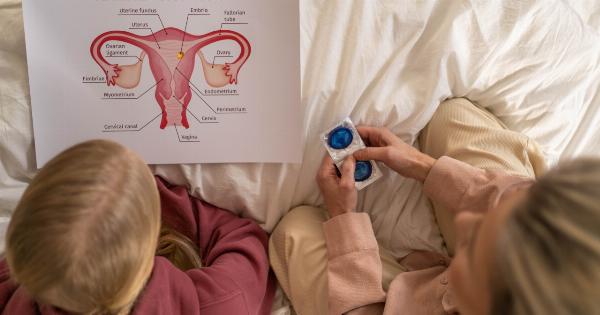Emergency contraception, also commonly known as the morning-after pill, is a form of birth control that can be used to prevent pregnancy after unprotected sexual intercourse or contraceptive failure.
It is a vital option for women who find themselves in situations where regular contraception methods have failed or were not used. This article aims to shed light on the various aspects of emergency contraception, including its types, effectiveness, usage instructions, legal availability, and potential side effects.
Types of Emergency Contraception
There are two main types of emergency contraception available: hormonal emergency contraception and Copper Intrauterine Devices (IUDs).
Hormonal Emergency Contraception
Hormonal emergency contraception involves the use of the hormone progestin, which is similar to the natural hormone progesterone found in a woman’s body.
This type of emergency contraception is mainly available as a single pill containing a high dose of progestin. Levonorgestrel, commonly known as Plan B, is the most widely used and easily accessible hormonal emergency contraceptive.
Plan B works by preventing ovulation, inhibiting fertilization, or interfering with implantation.
It is most effective when taken within 72 hours (3 days) after unprotected intercourse, but it can still provide some degree of effectiveness up to 120 hours (5 days) after. However, the sooner it is taken, the higher the effectiveness. Plan B is available over-the-counter without a prescription for individuals of all ages in many countries, making it easily accessible in pharmacies and some healthcare clinics.
Copper Intrauterine Devices (IUDs)
Copper IUDs are a highly effective form of emergency contraception. They are small, T-shaped devices that are inserted into the uterus by a healthcare provider. The copper in the IUD creates an environment that is toxic to sperm, preventing fertilization.
Additionally, if fertilization does occur, the IUD can prevent the fertilized egg from implanting in the uterus.
Copper IUDs are the most effective form of emergency contraception and can be used up to five days after unprotected intercourse to prevent pregnancy. They also offer long-term contraception, with some brands providing protection for up to 10 years.
However, they require a healthcare provider for insertion and removal, making them less accessible and suitable for immediate use.
Effectiveness of Emergency Contraception
The effectiveness of emergency contraception varies depending on the type used and the timing of administration. Hormonal emergency contraception, such as Plan B, is most effective when taken as soon as possible after unprotected sex.
Studies suggest that Plan B can reduce the risk of pregnancy by up to 95% when taken within 24 hours.
As time passes, the effectiveness gradually decreases. Taking Plan B within 72 hours can still greatly reduce the risk of pregnancy, while taking it between 72-120 hours offers some degree of effectiveness, although it is less reliable.
It is important to note that emergency contraception is not 100% effective and should not be used as a regular form of birth control.
Copper IUDs, on the other hand, are more than 99% effective at preventing pregnancy when used as emergency contraception. They are considered the most reliable and effective option, regardless of the time elapsed since unprotected sex.
Copper IUDs can also be used as a long-term contraceptive option even after the immediate need for emergency contraception has passed.
Usage Instructions
When using hormonal emergency contraception in pill form, it is essential to follow the instructions provided with the specific product. Generally, it is taken as a single dose, swallowed with water.
Plan B is most effective when taken as soon as possible after unprotected sex and can be taken with or without food. However, vomiting within two hours of taking the pill may require another dose to be administered.
For Copper IUDs, a healthcare provider must insert it into the uterus within the specified time frame after unprotected intercourse. The procedure is typically quick and can be done in a clinic or doctor’s office.
Once inserted, the IUD provides immediate contraception, and it can be left in place for ongoing birth control.
Legal Availability
The legal availability of emergency contraception varies from country to country. In many places, hormonal emergency contraception like Plan B is available over-the-counter without age restrictions, ensuring easy access for most individuals.
Other countries may require a prescription for hormonal emergency contraception, which can affect its availability and delay timely use.
Similarly, the availability of Copper IUDs for emergency contraception may also vary. In some countries, they are more readily accessible, while in others, healthcare providers may have specific guidelines or restrictions for their use.
Potential Side Effects
Emergency contraception is generally safe with minimal side effects. However, as with any medication or medical procedure, there may be some potential side effects to consider.
The most common side effects of hormonal emergency contraception include nausea, vomiting, breast tenderness, irregular menstrual bleeding, and fatigue. These side effects are usually short-lived and subside on their own.
If vomiting occurs within two hours of taking the pill, it is recommended to consult a healthcare provider to determine if another dose is required.
For Copper IUDs, the most common side effects include uterine cramping and changes in menstrual bleeding. These side effects are typically temporary and should resolve within a few weeks.
If any severe or prolonged side effects occur, it is essential to seek immediate medical attention.






























